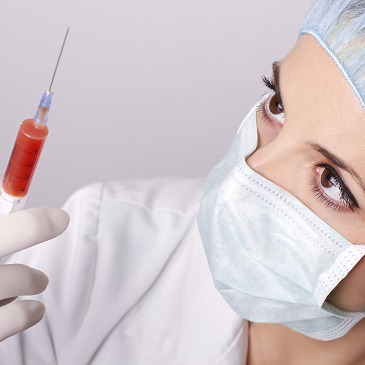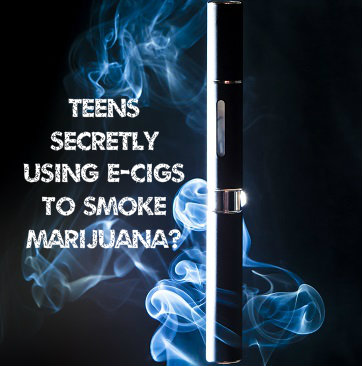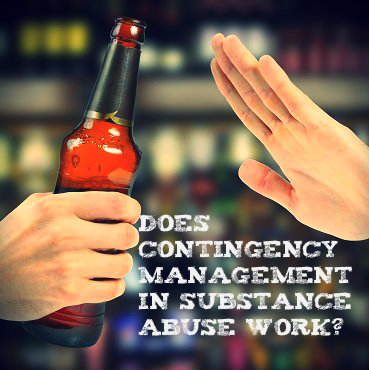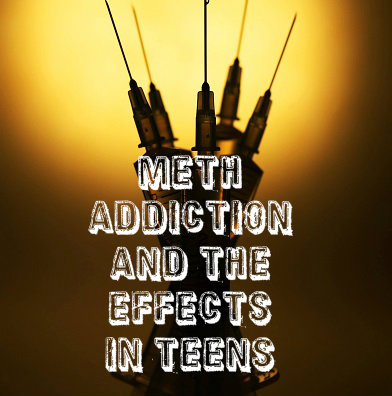Addiction is a complicated disease. For those of us who have never had an addiction, it can be easy to wonder why addicts can’t seem to make the decision to stop using and then do it. There are complicated brain chemical pathways that are affected by drugs and alcohol that lead to addiction and that make it almost impossible to stop using. Modern research has uncovered much of the role of the brain in addiction, but more recently has found that the immune system is also important.
The Immune System And The Brain
 Your body’s immune system is a complex network of different types of cells that are dedicated to protecting you from foreign invaders that cause sickness. Many of those immune cells live in the brain. These are called glial cells and they work alongside your neurons, or brain cells. The brain cells and immune cells that work together to regulate the responses of the immune system are called collectively, the neuroimmune system. This system keeps the brain healthy and mediates communication between the immune system and the central nervous system.
Your body’s immune system is a complex network of different types of cells that are dedicated to protecting you from foreign invaders that cause sickness. Many of those immune cells live in the brain. These are called glial cells and they work alongside your neurons, or brain cells. The brain cells and immune cells that work together to regulate the responses of the immune system are called collectively, the neuroimmune system. This system keeps the brain healthy and mediates communication between the immune system and the central nervous system.
Addiction’s Effects On The Neuroimmune System
Parts of the neuroimmune system are activated by various factors. Stress is one factor, which is why the feeling of being stressed can actually make you physically sick. Alcohol and drugs also trigger responses in the neuroimmune system. The responses can lead to disrupted decision making. This helps to explain why addicts make choices about using even when doing so is bad for them.
The response of the neuroimmune system to drugs and alcohol also changes a person’s affect and causes feelings of depression. Again, these feelings are characteristic of addiction. Researchers have even found that people with certain genetic variations in their neuroimmune system are more likely than others to succumb to addiction.
Innovative Addiction Treatments
With the increased understanding of how the immune system in the brain impacts addiction, researchers are able to come up with new treatments for this devastating disease. One such possible treatment may help addicts who use opioids like heroin and prescription painkillers. Studies have found that morphine, an opioid drug, binds to a certain immune system receptor that changes the dopamine pathway in the brain.
Dopamine is the brain chemical that is released when we feel something pleasurable. Drugs release huge floods of dopamine, which plays a role in developing addictions. The researchers hope that if they can block the immune receptor with a medication, they can stop the release of dopamine when someone uses an opioid. With no pleasurable sensation, there would be no addiction.
Methamphetamine is another seriously addictive drug that can be just as hard to quit as opioids. Research has shown how the drug negatively impacts the immune system of the user, so new studies have focused on targeting the immune system for treatment medications. A drug being developed for a variety of immune diseases may also help meth addicts. The drug reduces the immune response in the brain, which could help meth addicts feel better. One major hurdle to quitting is that the users feel awful when they give up meth. With the new medication, they may feel better, and less inclined to going back to using.
Other researchers have tackled cocaine addiction by working with the immune system. The new treatment is actually a vaccine. The researchers who developed it created a vaccine that would target cocaine and treat it as if it were an invader like a virus or bacterium. After being injected with the vaccine, mice in laboratory experiments showed an immune response that tackled any cocaine in the body. The result was that the mice did not get a high from cocaine. If the vaccine works in human trials, it could help addicts stop using. If they get no high, there will be no reason to use the drug.
The exciting field of addiction and the immune system is coming up with new information about the disease of addiction every day. With this new knowledge, researchers are able to create treatments that are medically- and evidence-based that may truly help people recover from addiction.
18 Nov 2013
E-Cigarettes Secretly Used To Hide Drug Use
The e-cigarette is a modern invention and an alternative to tobacco cigarettes. They were designed to allow people to smoke and to get nicotine into the bloodstream without inhaling all of the toxins found in tobacco. E-cigarettes may be helping people to quit smoking, and because they do not produce actual smoke, they may also allow people to get their nicotine without affecting the people around them.
On the surface, it seems that e-cigarettes are a great invention that can help people. Unfortunately, there are downsides to these fake cigarettes, not least of which is the fact that they can be used to smoke illegal drugs, like marijuana. Because of the way they work, someone can smoke pot using an e-cigarette without being detected.
The E-Cigarette Revolution
 An e-cigarette is different from a traditional cigarette in that it does not use tobacco. Instead, it uses batteries and a liquid solution of nicotine. The battery heats and vaporizes the solution so that the user inhales and exhales vapors, rather than smoke. Because nicotine is the only ingredient, the user is also not inhaling all of the additives in tobacco that are so harmful, such as tar, acetone and arsenic.
An e-cigarette is different from a traditional cigarette in that it does not use tobacco. Instead, it uses batteries and a liquid solution of nicotine. The battery heats and vaporizes the solution so that the user inhales and exhales vapors, rather than smoke. Because nicotine is the only ingredient, the user is also not inhaling all of the additives in tobacco that are so harmful, such as tar, acetone and arsenic.
Although nicotine is still a drug, and one that is harmful and addictive, smoking an e-cigarette is much less dangerous than smoking tobacco cigarettes. It is also less harmful to others around the smoker because there is no secondhand smoke. Without the offensive fumes, it may be possible for people to smoke using e-cigarettes in areas that are normally restricted to smokers.
For the above reasons, e-cigarettes are set to become big sellers in the U.S. and elsewhere. Some experts are even predicting that they will start to outsell real cigarettes within a decade. E-cigarettes are already big business in Europe. The European Parliament recently rejected a proposal to regulate them as medical devices, which would have meant tight restrictions on sales.
E-Cigarettes Being Used To Smoke Marijuana
Although e-cigarettes may have been created as healthier, alternative delivery devices for nicotine and to help smokers kick the habit, clever drug users have already crafted them for different uses. The cartridge of liquid nicotine solution that goes into an e-cigarette can easily be replaced by any liquid. Any substance can be vaporized and inhaled using one of these devices.
Most commonly, abusers are using a cartridge with a liquid solution of THC, the main psychoactive substance found in marijuana. With liquid THC in an e-cigarette, a person can get high and yet appear to be legally inhaling legal, nicotine vapors. The same property of e-cigarettes that allows users to smoke without offending those around them, allows for covert use of illicit drugs. The vapors produced by the e-cigarette are odorless. A person can get high without arousing suspicions.
Teens Smoking Marijuana With No Recognizable Odor
While an adult covertly smoking pot is a concern, a bigger one is the use of marijuana by teenagers. As the presence of e-cigarettes proliferates, teens are finding that they make an excellent vehicle for smoking pot. Smoking marijuana produces a characteristic odor that clings to clothes, hair and fingers. With e-cigarettes, a teen can inhale liquid THC, get high, and never give off the usual signs. Parents who are concerned that their teens may be using marijuana will have to be more vigilant and look for other signs of intoxication.
E-Cigarettes Targeting Young People?
Another concern regarding teens and e-cigarettes is that these new devices may be targeting young people. E-cigarettes can be sold with different types of nicotine cartridges with flavors like strawberry, peach and grape. They are also sold online, which makes it easier for kids to get a hold of them. If kids start using these devices at a young age, they may be more inclined to try other substances. In other words, e-cigarettes may become the new gateway drug. The problem has already begun, as statistics indicate that the number of middle and high school students using e-cigarettes is rising.
It seems that e-cigarettes have a place in our modern world. They allow adults to use a legal substance in a way that is less harmful than cigarettes. They also help those who want to quit the habit of smoking. On the other hand, e-cigarettes pose a big problem. Until we can figure out how regulate them fairly, or how to detect illegal drugs being used in e-cigarettes, parents and other adults should be aware of the possibility that they are being abused by teens.
Read About Smoking Marijuana And The Future Effects On Teens
“Mother’s little helper” has been around for decades. In 1966, The Rolling Stones released a hit song about the abuse of drugs, like Valium, by mothers looking to take the edge off a busy day. Now, some moms are using different substances to get through the day: prescription stimulants. Although they can provide a boost of much-desired energy, many women develop a drug addiction to these commonly prescribed “legitimate” medications.
 Prescription stimulants are normally used to treat a range of medical conditions, including attention-deficit hyperactivity disorder (ADHD), narcolepsy, and depression. Common stimulant medications include Dexedrine (dextroamphetamine), Adderall (amphetamine and dextroamphetamine), Ritalin (methylphenidate), and Concerta (methylphenidate).
Prescription stimulants are normally used to treat a range of medical conditions, including attention-deficit hyperactivity disorder (ADHD), narcolepsy, and depression. Common stimulant medications include Dexedrine (dextroamphetamine), Adderall (amphetamine and dextroamphetamine), Ritalin (methylphenidate), and Concerta (methylphenidate).
Legitimate Stimulant Use
Chemically, these drugs are similar to natural neurotransmitters within the brain, including norepinephrine and dopamine. When taken to treat a genuine medical condition, a physician will prescribe the medication at a low level and gradually increase it until the drug produces the desired effects. In addition, the stimulant typically comes in a capsule or tablet form that allows for the slow release of the medication into the body. This slow, steady rise in dopamine mimics the body’s natural production. When used as directed by a physician, ADHD medications and other prescription stimulants are not addictive and produce no high.
Stimulant Abuse And Emergency Room Visits
The effect is different when stimulants are abused, however. Instead of capsules or tablets generating a slow, steady rise of dopamine over time, the pills are crushed before being snorted or they are dissolved in water and then injected. This causes a dopamine rise so rapid that it disrupts the brain and produces feelings of euphoria.
Evidence suggests that drug addiction to stimulants is on the rise. For example, emergency room visits involving stimulant abuse skyrocketed between 2005 and 2010. Visits more than tripled for people over age 26 [1].
Why Mom’s Are Abusing Stimulants
The demands placed on mothers in this culture can feel overwhelming. From single moms to homeschooling moms to moms who work outside the home, many feel the pressure of being the master multitasker. Some mothers turn to stimulants in the belief they will help them focus better on their responsibilities or help them make it through a hectic day. It’s important to note that while these prescriptions can increase concentration in those with a medical need for them, there is no clinical evidence that abusing these drugs sharpens focus.
Women also frequently use stimulants to lose weight. For example, Adderall can speed up metabolism and lower appetite, resulting in weight loss. However, it’s not a healthy or permanent weight loss solution. When a woman stops taking the drug, she typically gains the weight back – and sometimes even more.
Dangers Of Stimulant Abuse
Abusing any drug can have a serious impact on a mother’s emotional and physical well-being; however, stimulant abuse is particularly dangerous. When abused, these medications can trigger irregular heartbeat, heart failure, seizures, and dangerously high body temperatures. As mentioned earlier, stimulants also cause decreased appetite, which, in serious cases, can cause malnutrition. In addition, women addicted to high doses often experience episodes of paranoia or hostility. Instead of helping a mother meet the demands of a busy lifestyle, stimulants make it harder to handle normal responsibilities, including caring for children.
There is also added danger in the method some addicts use to get high. When the drug is dissolved in water, some insoluble fillers in the pill may not break down completely. While these solid pieces are small enough to be injected, they are also large enough to block small blood vessels, creating the risk for serious health complications.
Stimulants are also dangerous because they don’t mix well with other substances. The ER study mentioned above showed that 63% of visits involving stimulants included the use of alcohol, painkillers, sleep aids, or anti-anxiety medications [1]. The use of other drugs adds an additional layer of risk to stimulant drug addiction.
Stimulant Drug Addiction Treatment
If you’re addicted to or abusing stimulant prescription drugs, you need drug rehab treatment. Addicts experience psychological withdrawal from chronic stimulant abuse, so the first step will likely be a medically-monitored detox to wean your body from the drugs.
After detoxification, therapy begins. There are several therapies used to treat this addiction, and your rehab team will recommend one or more based on your situation. Cognitive-behavioral therapy (CBT) is often used to examine the negative thoughts, beliefs, behaviors, and emotions that contribute to addiction. Once you better understand how those contribute to your drug addiction, you’ll learn how to positively change those thinking patterns in order to cope in a healthier way. Although considered a short-term type of therapy, CBT involves a gradual process that takes time and effort in order to be effective.
Contingency management is another treatment that may be used for abuse of Adderall and other prescription stimulants. Sometimes called voucher-based reinforcement (VBR), the program provides tangible rewards for positive behaviors and staying drug free. For example, an addict who stays clean for a specified period of time, as verified through urine samples, may earn a voucher for food, movie tickets, or other goods and services that promote drug-free behavior. The value of the voucher starts low and increases the longer the addict stays clean.
Studies of contingency management show that it can reduce stimulant abuse when used as part of a comprehensive treatment strategy [2]. Additionally, one study suggests that, on its own, contingency management may be more effective at treating stimulant use than CBT alone [3].
Treatment for stimulant drug addiction will also likely include support groups. Often based on the 12-step program first developed by Alcoholics Anonymous (AA), self-help groups provide guidance and assistance to recovering addicts. You’ll be able to connect with others going through the same struggles, which may help reduce feelings of hopelessness or isolation. Meetings are free, and you can attend them for as long as needed to help you stay abstinent.
Drug addiction in mothers can lead to serious consequences for herself and her children. Contact a drug rehab treatment facility about getting help for stimulant abuse or addiction. With treatment, it’s possible to stop abusing drugs and start learning healthier ways to live life, no matter how hectic your life may be.
References:
[1] http://www.samhsa.gov/newsroom/advisories/1301241230.aspx
[2] http://www.ncbi.nlm.nih.gov/pubmed/23138961
[3] http://www.ncbi.nlm.nih.gov/pubmed/16445555
Choosing the right alcohol or drug rehab treatment strategy can be a challenge for someone still struggling with addiction. One of the most confusing aspects for many is simply figuring out which therapy does what. It’s critical information because it will guide you toward making the best decisions regarding treatment. This article will help you understand the treatment approach known as contingency management (CM) and how it helps addicts during recovery.
Contingency Management Basics
 Contingency management is based on a simple principle: behavior that is rewarded is behavior more likely to be repeated in the future. It’s a principle we see all the time in everyday life. For example, a teen may earn an allowance for taking on extra chores, or a boss may award her employees with bonuses for excellent performance.
Contingency management is based on a simple principle: behavior that is rewarded is behavior more likely to be repeated in the future. It’s a principle we see all the time in everyday life. For example, a teen may earn an allowance for taking on extra chores, or a boss may award her employees with bonuses for excellent performance.
Although it can be used to treat alcohol abuse, CM is most commonly employed as to treat drug abuse and addiction. The therapy is also used by health professionals to help people overcome a range of challenges, including weight loss, exercise motivation, and cigarette smoking. Additionally, contingency management is sometimes utilized to increase the likelihood a patient will take medication as directed.
How Exactly Is CM Used In Substance Abuse Treatment?
During substance abuse treatment, CM reinforces positive, drug-free behavior with explicit, tangible rewards. One of the most common ways to use this reinforcement is to allow addicts to earn vouchers for goods and services, like movie tickets, retail goods, sports equipment, or electronics, after they’ve submitted a specified number of drug-free urine samples. In some programs, the reward has a fixed dollar amount, such as $25. Other treatment plan rewards may increase in value the longer the drug abuser stays clean. For example, a voucher may hold a starting value of $10 and increase by $2 for each negative sample the addict provides. The goal is to encourage substance abusers to remain abstinent during outpatient treatment.
Why CM Promotes Healthy Behaviors In Addicts
In addition to promoting abstinence, CM can be used to promote other healthy behaviors in addicts. Addiction therapists may reward patients for attending a certain number of 12-step meetings or showing positive behaviors during drug rehab treatment. One program offered housing and behavioral treatment to homeless cocaine addicts in exchange for staying drug-free [1].
Another form of contingency management involves medication for methadone patients. Recovering addicts may be permitted to take methadone doses home if they increase positive behaviors or cease negative ones. A patient, for instance, could earn the right to take home one dose a week after submitting a specific number of drug-negative urine tests.
Contingency management can be an appropriate treatment for many addicts, however, it’s considered especially helpful for those in high-risk groups. For example, this drug rehab treatment has been used to reduce dangerous injection-related behaviors, which increase the risk of acquiring HIV and other bloodborne diseases [2]. CM has also been used successfully to treat pregnant women with addiction. One review of numerous studies concluded that contingency management was more effective at keeping pregnant women in drug treatment than motivational interviewing, another addiction therapy [3].
Effectiveness Of Contingency Management For Drug Abuse
Contingency management has proved to be an effective treatment for substance abuse disorders. One review of 47 studies found that incorporating it into treatment improved drug abstinence rates during recovery. However, it also suggested that contingency management may be more effective for those with opiate or cocaine addiction than for those with multiple drug addictions [4].
Research also suggests CM is useful for keeping addicts in outpatient therapy. Typically, many substance abuse patients miss scheduled appointments; one estimate puts the number as high as 60%. However, in one study, researchers gave addicts who attended scheduled group therapy the chance to draw from a prize bowl, which contained vouchers for prizes ranging from $1 to DVD players. Recovering addicts were more likely to attend weekly sessions when reinforced with contingency management than when they were not [5]. Another study discovered that 84% of outpatient substance abusers receiving vouchers stayed in treatment over 8 weeks, while only 22% of non-voucher patients did so [6].
Contingency Management Drug Addiction Treatment Plan
Like many drug rehab treatment options, CM is not intended to be used as a sole therapy. It’s often used in conjunction with other addiction treatments. For example, cognitive-behavioral therapy (CBT) is one approach a therapist could pair with contingency management. During CBT, the alcoholic or drug addict will identify the negative behaviors and emotions that contribute to addiction.
The cost of contingency management can prevent some substance abuse clinics from using this therapy. Some evidence suggests that CM is not as effective when the value of the vouchers is too low [7]. The cost of vouchers attractive enough to change addiction behavior can quickly add up. In one study, addicts received vouchers worth more than $1,000 over the course of treatment [8].
Some experts have raised concerns that incentives, such as those that allow substance abusers the opportunity to draw a random prize from a bowl, increase the risk for pathological gambling. However, prize drawings in CM have not been shown to promote excessive gambling, according to the National Institute on Drug Abuse [9].
Critics Of Contingency Management For Drug Rehab Treatment
Contingency management is not without critics. Some opponents of this approach assert that contingency management amounts to bribing drug users to stay clean. Another concern of critics is that some addicts will deceive treatment professionals by providing clean urine samples that do not belong to them, thus collecting the incentive without meeting their own obligation to stay abstinent. Additionally, those against this approach argue that CM does not directly address underlying issues that contribute to substance abuse. However, it’s important to note that contingency management is often paired with other treatments developed to produce long-term behavioral changes.
Drug rehab treatment may be one of the most important decisions you’ll ever make. Speak with an addiction professional to learn if contingency management is the right choice for you.
References:
[1] http://www.sciencedirect.com/science/article/pii/S0376871600800083
[2] http://www.ncbi.nlm.nih.gov/pmc/articles/PMC2271179/
[3] http://www.ncbi.nlm.nih.gov/pubmed/17943878
[4] http://onlinelibrary.wiley.com/doi/10.1111/j.1360-0443.2006.01581.x/abstract
[5] http://www.ncbi.nlm.nih.gov/pmc/articles/PMC2606605/
[6] http://psycnet.apa.org/journals/ccp/68/2/250/
[7] http://www.ncbi.nlm.nih.gov/pubmed/16445548
[8] http://ajp.psychiatryonline.org/article.aspx?articleID=174754
[9] http://www.drugabuse.gov/publications/principles-drug-addiction-treatment-research-based-guide-third-edition/evidence-based-approaches-to-drug-addiction-treatment/behavioral-0
13 Nov 2013
Why Is Drug Use Surging In Baby Boomers?
Statistics gathered by the Substance Abuse and Mental Health Services Administration, or SAMHSA, show a disturbing trend among older Americans. Members of the Baby Boom generation are using drugs and getting addicted to them in record numbers. Whether we can explain the trend or not, the fact remains that elder drug abuse presents some unique problems that require unique approaches for prevention and treatment.
 The statistics from SAMHSA show that among older Americans in recent years, marijuana use has increased five-fold, cocaine use has quadrupled, heroin abuse has doubled, and abuse of prescription drugs has more than quadrupled. The survey from SAMHSA also records treatment for drug abuse and addiction and found increases in the numbers of Boomers getting help for alcohol abuse in combination with cocaine use, and for abusing prescription painkillers. Emergency room visits for painkiller abuse and overdoses increased greatly over the last decade.
The statistics from SAMHSA show that among older Americans in recent years, marijuana use has increased five-fold, cocaine use has quadrupled, heroin abuse has doubled, and abuse of prescription drugs has more than quadrupled. The survey from SAMHSA also records treatment for drug abuse and addiction and found increases in the numbers of Boomers getting help for alcohol abuse in combination with cocaine use, and for abusing prescription painkillers. Emergency room visits for painkiller abuse and overdoses increased greatly over the last decade.
Explanations And Complications Of Drug Abuse In Older Americans
At first glance, the statistics surrounding the use and abuse of drugs in older Americans seems surprising. However, it is important to understand that we are discussing a generation of people who came of age in the 1960s, a time of experimentation and rebellion against authority. In tracking the drug and alcohol behaviors of this generation over the years, finding that they now, in their older years, are still using drugs is not a surprise. It only seems shocking when compared with the generations that came before them.
Unfortunately, drug abuse is even more of a problem for a person in his 50s and 60s than it was when he was in his 20s. As we age, our metabolism slows. For an older person abusing drugs or drinking too much alcohol, the time it takes to metabolize and get out of his system is much longer. An older person using may be intoxicated for longer and, therefore, at risk for more accidents and injuries.
Another issue is that drug users in their 50s or 60s are more likely to have health problems than they did in their younger years. Drug or alcohol abuse may exacerbate these problems, or even interact badly with prescribed medications. Furthermore, the symptoms of these other health conditions may mask the usual signs of drug abuse or addiction.
Signs Of Drug Abuse
Drug abuse and addiction are serious problems at any age, but in older Americans they present greater risks and complications. It is important to be aware of the possibility of drug use and to look out for signs in loved ones. Because another health problem may cause symptoms that mask the physical signs of drug abuse, watch for changes in behavior as the sign of a problem. Mood swings that are unexplained could be a sign of addiction, drinking or drug abuse. Changes in personality are also troubling. When someone just doesn’t seem like himself anymore, there could be a problem with drug abuse.
Prescription abuse is a growing problem among all age groups, so look for signs that your older friend or family member is abusing them. This could mean that he is requesting more refills for painkillers, seeing several doctors to get more prescriptions, going to more than one pharmacy or in other ways is trying to get more of his medications than has been prescribed.
Getting Help For A Loved One Abusing Drugs Or Alcohol
If anyone you love or care about is abusing drugs or alcohol, it is important to help him seek treatment; with an older person, it is especially imperative. Drug abuse can cause even more problems for someone who is older and should be stopped in its tracks. Having the courage to confront your parent, spouse, or other loved one about your suspicions could just save his life.
Confrontation is never easy so be prepared. Bring one or two other people along, friends or family members your loved one trusts. Be ready with solutions so that you are not simply accusing, but helping. Do your research ahead of time and find facilities for treatment that are prepared to work with older patients. As the problem of drug abuse continues to rise in the older demographic, more treatment centers are focusing on the age group. You should be able to find treatment plans that will suit the specific needs of your loved one and that will help him feel comfortable while getting well.
12 Nov 2013
Jimmy Choo Co-Founder, Tamara Mellon’s Personal Story On Addiction, Sobriety And Success
It’s easy to fall into the trap of thinking that substance addiction is an endless cycle that determines a person’s future. However, the reality paints a much brighter picture. For many, the act of conquering addiction is only the first step toward a happy and successful life. A recent example of this is the success story of Jimmy Choo founder Tamara Mellon, which illustrates the limitless possibilities of an addict’s life after overcoming addiction.
Tamara Mellon’s Rise From Rock Bottom

Courtesy of: luxsure.com
In her recently published memoir, “In My Shoes,” shoe fashion diva Mellon speaks openly and candidly about her troubled childhood, reckless partying and subsequent substance abuse that ruled much of her early life and career. Mellon was your classic binge drinker who suffered from a cocaine addiction. “One glass of red wine would turn into … calling my coke dealer at 6:00 in the morning” Mellon reports in an NBC Today interview. And as a member of London’s social-elite, Tamara had too-easy access to the club scene that fostered her habits.
Everything shifted in the span of only a couple of days, however, when Mellon was suddenly fired from her job at Vogue magazine and soon after urged by a friend to seek treatment (that moment was the first time, Mellon admits, that she realized that she had a substance abuse problem). The editor’s decision to fire her, Mellon explains, helped set “forces in motion that, in time, would lead to success far beyond anything I could ever have imagined.” Mellon’s recovery is a rocky one, as outlined in her memoir, but she manages to conquer it, a move that led her to develop the influential and extremely successful Jimmy Choo designer shoe label that led her to the top of the fashion industry.
History On Jimmy Choo
Founded in 1996, the J. Choo Limited label has become synonymous with the height of London’s fashion scene. It began as a partnership between Mellon, who focused on developing the brand since leaving rehab, and Jimmy Choo, a shoe designer and cobbler who made his living making shoes for celebrities and royalty, including Princess Diana. With the financial help of her father, Tom Yeardye, Mellon forged a partnership with Choo and launched the shoe line. It’s worth noting that while the line is named after Jimmy Choo, the shoes themselves were made—not designed—by him, but rather designed by Mellon herself and Choo’s niece, Sandra Choi.
Currently, the Jimmy Choo line is considered to be a shoe empire worth just under $1 billion U.S. dollars, with over 100 boutique shops in 32 different countries. The J. Choo Limited designer shoes have made appearances in Hollywood on the red carpet and on screen, including the hit show “Sex and the City.”
Jimmy Choo himself, whom the company is named after, was bought out in spring of 2001 by Equinox Luxury Holdings Ltd. And while Mellon stayed with the company for another decade, she too left in 2011 to start another shoe label, this time under her own name “Tamara Mellon.” Today, J. Choo Limited is operated by chief creative officer Sandra Choi, Jimmy Choo’s niece and former apprentice.
Mellon’s Family Struggle With Alcoholism
As is the case with many people, Mellon’s substance abuse and addiction began at home. Born and reared in London’s upper-class society, Mellon still describes much of her upbringing as “anything but glamorous.” In her memoir, Mellon reports that her mother was a “raging alcoholic,” prone to fits of rage and, like most alcoholics, displayed unpredictable behavior.
The pattern of drug abuse and addiction often runs in families, regardless of their social status, and Mellon is a good example of this. Parents play a central role in their children’s lives, and by extension, their substance addictions do too. In fact, the American Academy of Child and Adolescent Psychiatry (AACAP) reports that children of alcoholics are more than four times as likely to become alcoholics themselves as children of sober parents. Numerous factors play into this, including a greater chance of experiencing neglect or physical abuse (abuse that Mellon experienced firsthand as a young child), and a greater chance of developing emotional problems, including depression, aggression and isolation. In addition, the shame and denial of alcoholism often prevents parents from confronting their children when they begin to abuse drugs themselves.
Like with many of Mellon’s personal and business actions, the publishing of “In My Shoes,” as well as the launch of the Tamara Mellon line, is surrounded by controversy. Some accuse her of sensationalism, while others cast doubt on her ability to build another shoe empire. Mellon however, remains unfazed; after all, she has already faced and conquered the demon of substance addiction—a huge accomplishment on its own. There is no doubt, however, that Mellon’s life is a real success story, and her success and zest for life is due, she says, to overcoming everything that life has thrown at her.
Says Mellon: “I fought my way through the rites of passage.”
11 Nov 2013
Meth Addiction And The Effects In Teens
Fans of the hit crime drama Breaking Bad may have become familiar with the dangers of methamphetamine use. However, as a parent, you may have questions about methamphetamine abuse in teenagers and whether it requires drug rehab treatment. Surveys suggest that 2 to 3.5% of adolescents have used methamphetamines [1]. Also called “speed” or “glass”, it’s a highly addictive stimulant.
How Meth Works
Methamphetamine – or “meth” for short – is a type of amphetamine, a drug that acts on the body’s central nervous system. The drug works by increasing dopamine levels within the brain to very high levels. Dopamine is the brain chemical that’s linked to pleasure, reward, motivation, and also motor function. When dopamine levels skyrocket, as they do during meth use, the user experiences a pleasurable rush that is often compared to euphoria.
While there are several types of amphetamines, meth is generally considered the most potent. The drug can be snorted, injected, or taken orally. Some abusers use a method called parachuting, which involves crushing a pill and then rolling the powder into a piece of tissue or toilet paper. The entire package – tissue and all – is then swallowed, delivering what’s believed to be a stronger, faster high because the pill’s outer protective layer has been destroyed.
 Teen meth addicts will typically use daily or nearly daily. Addiction requiring drug rehab treatment can develop quickly, sometimes within just a few uses. Chronic abuse of the drug leads to tolerance. As one’s tolerance level increases so does the amount of the drug that’s needed in order to achieve the euphoric high.
Teen meth addicts will typically use daily or nearly daily. Addiction requiring drug rehab treatment can develop quickly, sometimes within just a few uses. Chronic abuse of the drug leads to tolerance. As one’s tolerance level increases so does the amount of the drug that’s needed in order to achieve the euphoric high.
Effects Of Meth
Since meth is a stimulant, like cocaine, a teen will experience immediate physical effects, even when the drug is taken in small amounts. Meth users experience increased heart rate and respiration, irregular heartbeat, high body temperature, decreased appetite, inability to sleep, and increased physical activity.
An adolescent with a long-term meth addiction can experience more serious effects. Anxiety, confusion, and extreme weight loss are common. Many develop severe dental problems, such as tooth decay and loss, because the drug reduces output of saliva, which normally protects the mouth, and drug users often have poor dental hygiene.
Teen meth addicts are also at risk because the drug enhances the sex drive. Several studies have found that youth, especially females, who use meth are more likely to engage in risky sexual behaviors [2]. This potentially leads to unsafe sexual practices, including having sex without protection. Research has found a strong association between meth users and sexual risk-taking. A study of adults using meth found they were 1.7 times more likely to have gonorrhea and twice as likely to have chlamydia [3].
Chronic methamphetamine abusers might experience serious psychotic symptoms, including hallucinations, delusions, or paranoia. This can lead to physical problems as well. For instance, a meth user might scratch and gouge at their skin to remove “bugs.” Auditory hallucinations can be particularly dangerous if the addict believes “voices” are commanding him or her to harm others, a symptom that makes drug rehab treatment that much more important.
Meth use in teens can also cause permanent brain damage. Research shows that chronic use causes structural and functional changes to brain areas linked to memory and mood [4, 5]. In addition, brain imaging has shown that meth use changes the dopamine system in a way that reduces verbal learning and motor skills [6]. Using the drug over time also disrupts the body’s normal production of dopamine; as a result, chronic users show severe mood swings.
Signs Of Meth Abuse In Teens
- Euphoric moods (may appear unusually happy)
- Paranoia
- Reduced appetite
- Incessant talking
- Rapid weight loss
- Dilated pupils
- Dry, itchy skin
- Skin sores
- Intense mood swings
- Anxiety, nervousness
- Shaky hands
- Violent or aggressive behavior
- Excessive sweating
Symptoms can become worse as a teen’s meth addiction deepens. For instance, a meth addict often appears undernourished or even sick. He or she may have frequent mood swings, abruptly switching from chatty and friendly one moment to aggressive and hostile the next.
Treatment For Meth Addiction
Due to the serious short-term and long-term health risks, including brain damage and even death, meth addiction in adolescents requires immediate drug rehab treatment. Meth abusers can experience intense withdrawal symptoms, including severe agitation, anxiety, sleeplessness, and strong urges to use. Since withdrawal symptoms can be so powerful, teens should detox in a treatment center where they can be medically monitored.
After the drug is out of the body, your teen will start a treatment plan that will likely have several components based on his or her needs. Currently, there are no approved medications to treat methamphetamine addiction. However, rehab centers have a number of therapies for helping adolescents recover. For example, an addictions specialist may recommend cognitive behavioral therapy. This particular type of therapy helps teens learn more about the factors, such as negative emotions, irrational thoughts, or unhealthy behaviors, that contribute to their drug use. This therapy also teaches them how to deal with those factors in a drug-free way. Contingency management may also be beneficial in a drug treatment program. It provides tangible incentives, such as movie tickets or cash, for drug-free urine samples.
Alternate Therapies For Addiction
Other therapies may help your teen as well. For example, animal-assisted therapy, which involves the use of animals like dogs or horses, can be especially powerful. This treatment approach can help addicted teens reduce anxiety, build self-confidence, and develop trust. Talk with an addiction specialist to learn more about the benefits of animal-assisted therapy.
Family education and counseling will also be essential for guiding your teen through recovery. Educational sessions help parents and family members better understand the nature of addiction. They also show ways to help an addicted teen stay free of drugs. In family counseling, a therapist works with family members to pinpoint and resolve conflicts and communication issues, including those that have played a role in your teen’s decision to use drugs. Family therapy can play an important role in helping your teen avoid a relapse down the road.
Meth Affects The Brain’s Pleasure Center Long After Use
Treating an addiction to meth is challenging, in part, because the brain’s ability to produce dopamine is hampered for up to 6 months or more after drug use stops. As a result, addicts may be unable to experience pleasure. This can make it difficult for them to find enjoyment in even simple activities like spending time with friends, seeing a movie, or relaxing on the beach. This lack of positive emotion can compel many teens to start using again, just so they can feel some form of pleasure.
Yet, despite the challenges, adolescents can fully recover from a methamphetamine addiction. If you suspect or know that your teen is abusing meth, consult a drug rehab treatment as soon as possible – preferably one that is skilled in handling meth abuse and addiction in teens. The staff will work with you to lay out a plan for recovery that gives your teen the best chance for success.
Read More About What Meth Use Can Do To You
References:
[1] http://www.drugabuse.gov/drugs-abuse/methamphetamine
[2] http://www.biomedcentral.com/1471-2431/8/48/abstract
[3] http://www.healio.com/infectious-disease/hiv-aids/news/print/infectious-disease-news/%7B458a3b28-01a8-45ca-af13-dead2d781f8b%7D/methamphetamine-use-increases-risk-of-acquiring-hiv-stds-and-mrsa
[4] http://www.jneurosci.org/content/24/26/6028.long
[5] http://www.ncbi.nlm.nih.gov/pubmed/14706946
[6] http://www.ncbi.nlm.nih.gov/pubmed/11229977
Adolescence is a time of change and self-discovery. For some teens this change involves experimentation with substances, or perhaps even the development of alcohol or drug addiction. That seems to be particularly true for lesbian, gay, bisexual, and transgender (LGBT) teens, a group that shows alarming rates of substance abuse and addiction. If you’re a parent or caregiver, keep reading to learn more about why LGBT teenagers have higher rates of substance abuse and what you can do to help.
LGBT Teen Addiction Statistics
 Research consistently shows that lesbian, gay, bisexual, and transgender teens abuse substances at higher rates than their heterosexual peers. Overall, the odds of abusing substances are 190% higher for LGBT teens than for teens that are heterosexual. However, alcohol and drug use rates are even higher in specific LGBT populations. Bisexual youth have substance abuse rates that are 340% higher than heterosexuals, while females have rates that are 400% higher [1].
Research consistently shows that lesbian, gay, bisexual, and transgender teens abuse substances at higher rates than their heterosexual peers. Overall, the odds of abusing substances are 190% higher for LGBT teens than for teens that are heterosexual. However, alcohol and drug use rates are even higher in specific LGBT populations. Bisexual youth have substance abuse rates that are 340% higher than heterosexuals, while females have rates that are 400% higher [1].
This doesn’t mean that every non-heterosexual teen will become addicted. In fact, research suggests some of the lowest levels of substance abuse are found among students, regardless of sexual orientation, who do not experience homophobic teasing and feel they are in a positive school environment [2].
The Link Between LGBT Teens And Addiction
Identifying as a non-heterosexual person does not in itself lead to alcohol or drug addiction. However, LGBT youth may be forced to deal with unique challenges; it’s these challenges that can raise their risk of addiction significantly.
For instance, lesbian, gay, bisexual, and transgender teenagers are at higher risk for bullying from their peers. Whether the bullying behavior involves being pushed around in a hallway or being victimized on Facebook, it can isolate an adolescent and lead to feelings of depression, which is a risk factor for substance abuse. One study found that teens bullied because they were perceived as gay were more likely to be depressed than those bullied for other reasons or not at all [3].
The threat of violence against LGBT people might also drive a teen to make unhealthy choices that include alcohol or drug abuse. About 21% of all hate crimes in 2011 were based on the victim’s sexual orientation, according to the FBI. Of those, 60% were attacks specifically against gay men and 11% targeted lesbians [4]. Adolescents who feel threatened may also feel the need to self-medicate their severe stress and anxiety with alcohol or drugs.
Parental rejection may also contribute to an LGBT teen’s alcohol or drug addiction. For example, young adults who were rejected by parents for their sexuality during adolescence were almost 4 times more likely to use illicit drugs than those who didn’t experience rejection [5].
Community factors can play a role as well. A study of non-heterosexual adults found that those who lived in states that banned same-sex marriage had a 42% increase in alcohol use disorders [6]. While this particular study examined adults, it’s possible that living in an environment that actively rejects an LGBT teenager’s identity can spur substance abuse.
How To Help LGBT Teens
As a parent or caregiver, it’s essential to help a teenager struggling with substance abuse. Excessive use of alcohol or the abuse of prescription or illicit drugs lays the foundation for a life that’s spent dealing with an addiction rather than living up to potential. Addiction is a chronic mental health condition, although with treatment it can be managed and even overcome. Finding help now gives your teen an opportunity to get back onto a healthier path before an accident or overdose makes it too late.
Seek professional help. Alcohol and drug abuse should be treated by qualified professionals. If possible, choose a recovery facility skilled in working with LGBT youth. These centers will have expertise in helping a lesbian, gay, bisexual, or transgender addict deal with situation-specific emotions and behaviors that play a role in his or her addiction. For example, a rehab center with an LGBT program will work with your teen on matters dealing with sexuality, sexual identity, gender identity, and family dynamics.
If you cannot locate alcohol or drug addiction treatment specifically for an LGBT addict, don’t give up hope. A qualified addiction center can still treat your teen for substance abuse. You’ll work with a specialist to develop a treatment plan that addresses your teenager’s needs. Depending on the substance, he or she may need detoxification (detox) as well as therapy. Since teenagers are heavily influenced by their peers, it’s normal for addicted teens to require residential rehab so they can fully immerse themselves in a safe, substance-free environment.
Substance abuse aftercare is also a critical part of maintaining sobriety in adolescents. Addiction aftercare, which will likely include therapy, ensures that a teen addict continues to have access to the tools that help him or her stay in recovery. In addition, LGBT teens are particularly vulnerable to bullying and, in some cases, violent attacks because of their sexual identity. An aftercare program will help a teenager cope with those challenges in a healthy way.
Create a supportive home. Researchers have found that parental rejection during an LGBT teen’s adolescence boosts the risk of substance abuse. Consider how you or other caregivers have reacted to your teenager’s identification as non-heterosexual. If you or a spouse has reacted with disappointment or anger, or if you’ve rejected the teen outright, start educating yourself in order to better understand your own feelings. Support groups for LGBT parents can be an ideal resource for those struggling to accept a non-heterosexual teenager. You’ll find beneficial support from parents who have experienced the same emotions and challenges.
Encourage your teen to connect. Support from others in the LGBT community will nurture your teenager in a positive way. Building friendships with those who are going through the same life experiences will help him or her feel less isolated. Be sure, however, that these connections are the kinds that encourage sobriety and a healthy lifestyle.
Alcohol and drug addiction can ruin the life of your teen. Don’t wait to get help. Reach out to treatment professionals who are experienced in working with LGBT . Doing so will give your son or daughter the best chance to have an addiction-free life.
References:
[1] http://www.ncbi.nlm.nih.gov/pmc/articles/PMC2680081/
[2] http://www.cdc.gov/lgbthealth/youth.htm
[3] http://library.wheelerclinic.org/poc/view_doc.php?type=news&id=155391&cn=5
[4] http://www.fbi.gov/about-us/cjis/ucr/hate-crime/2011/narratives/incidents-and-offenses
[5] http://pediatrics.aappublications.org/content/123/1/346.abstract
[6] http://ajph.aphapublications.org/doi/abs/10.2105/AJPH.2009.168815


